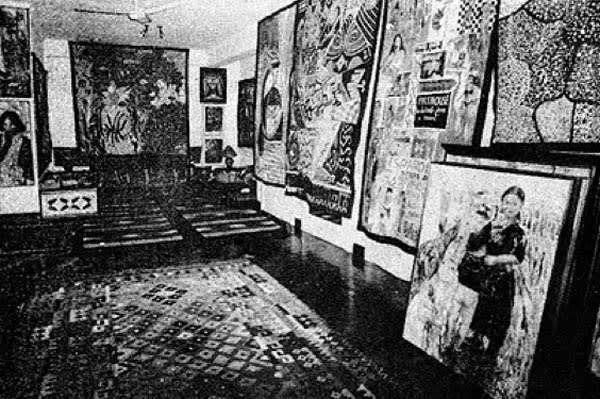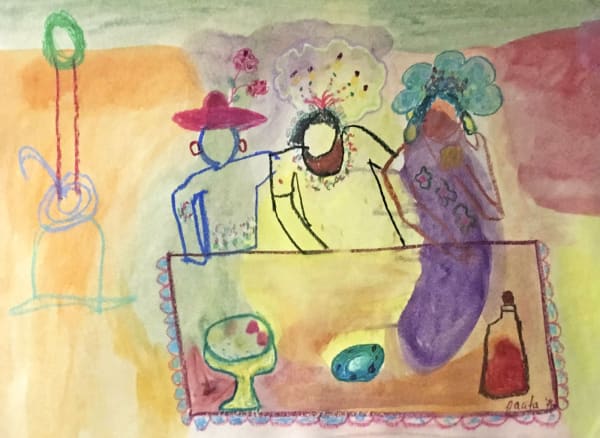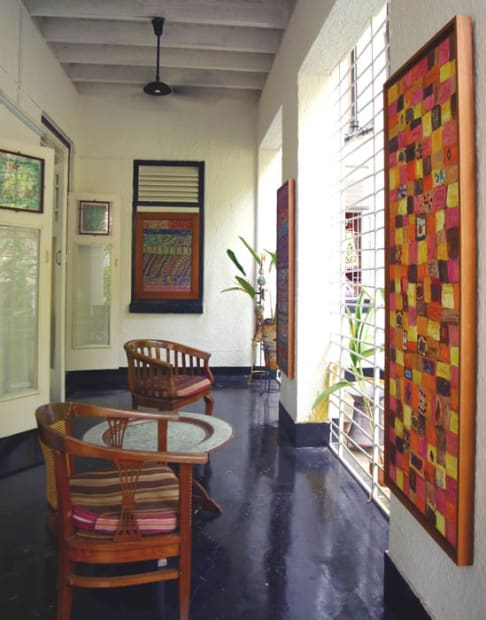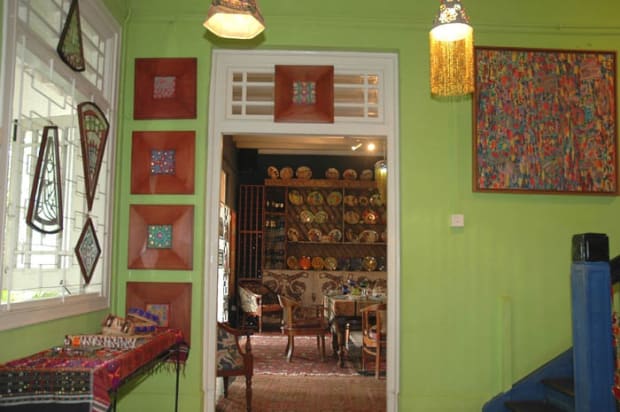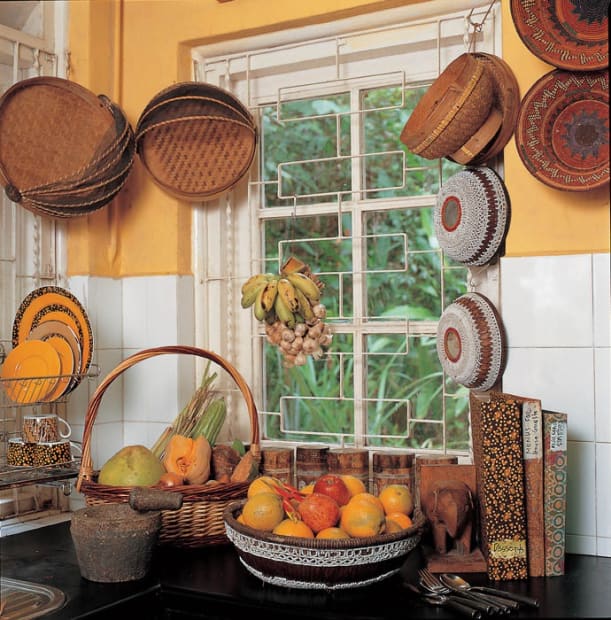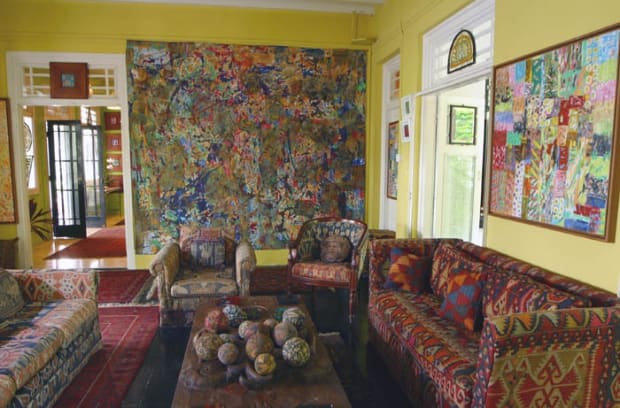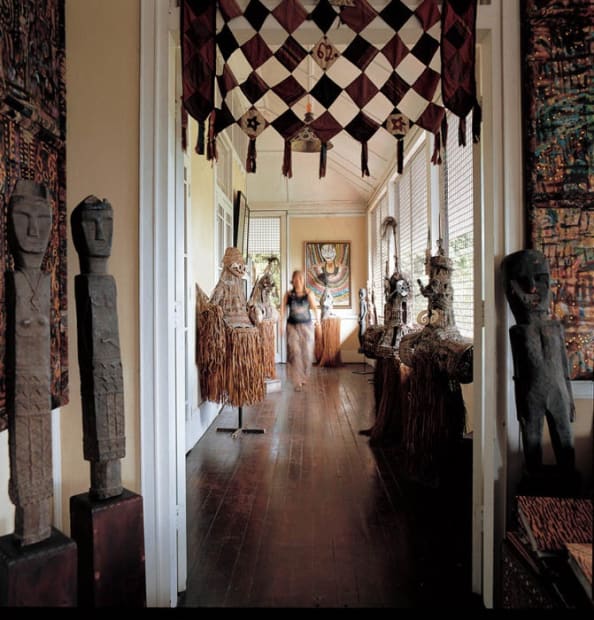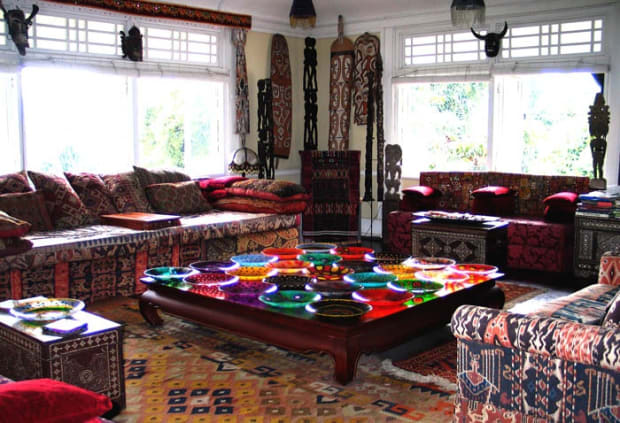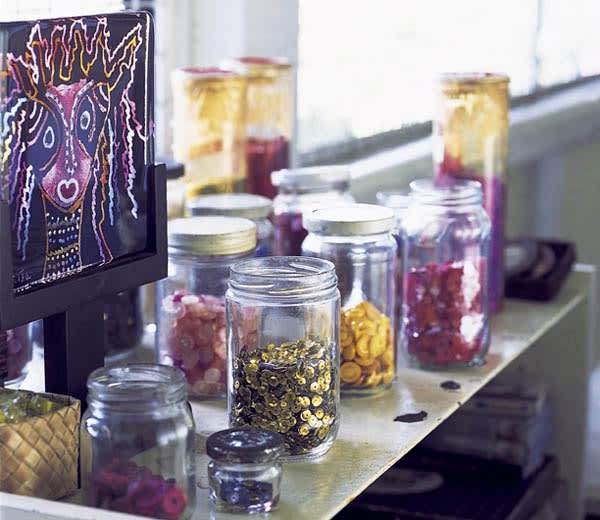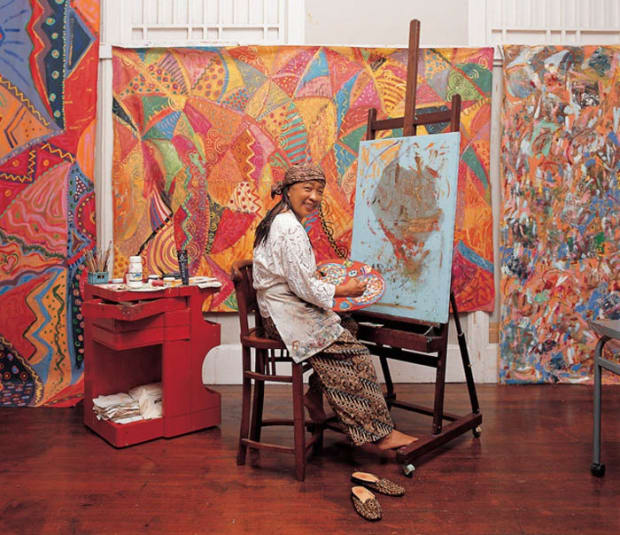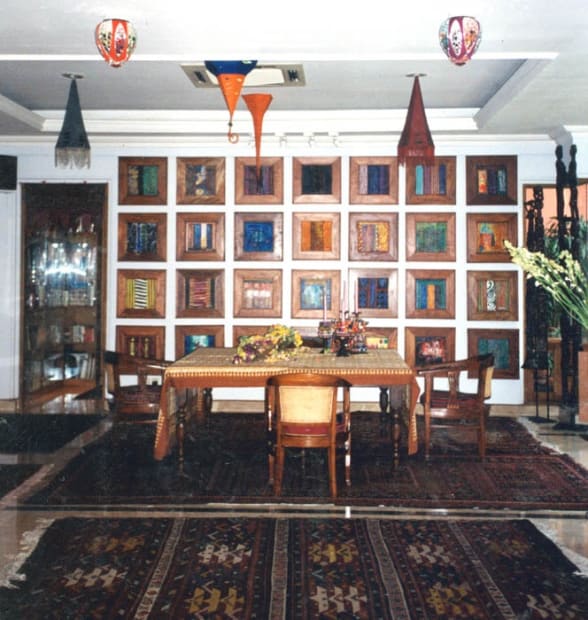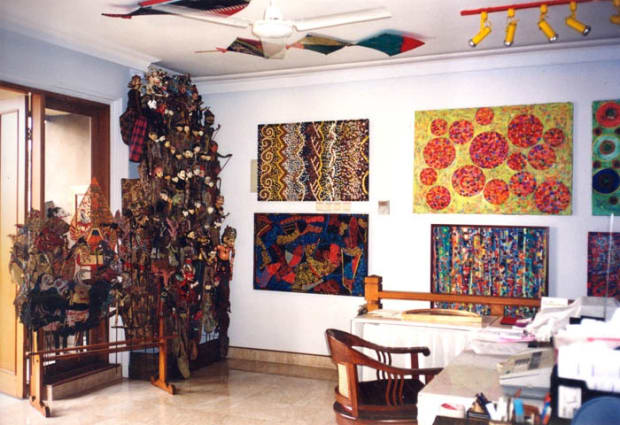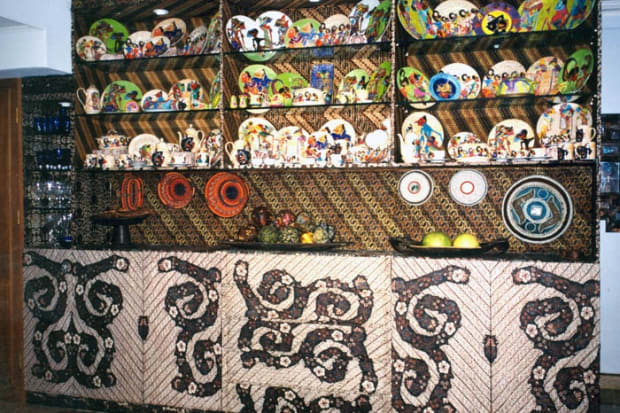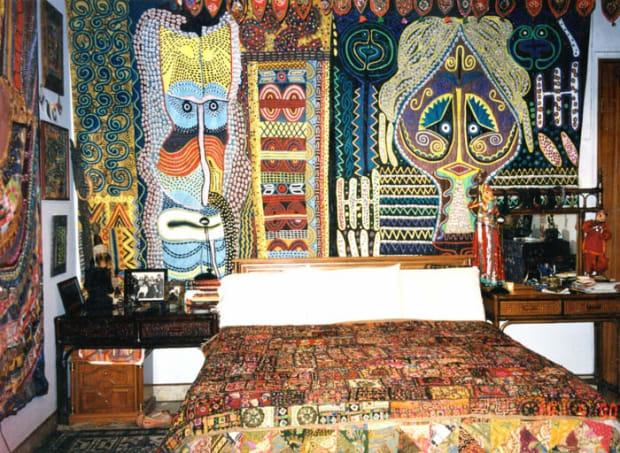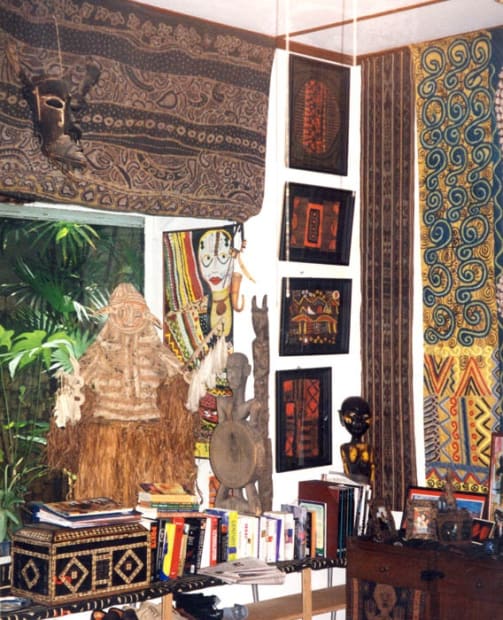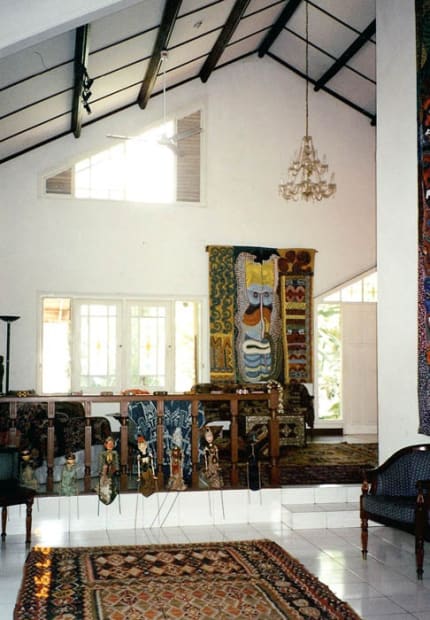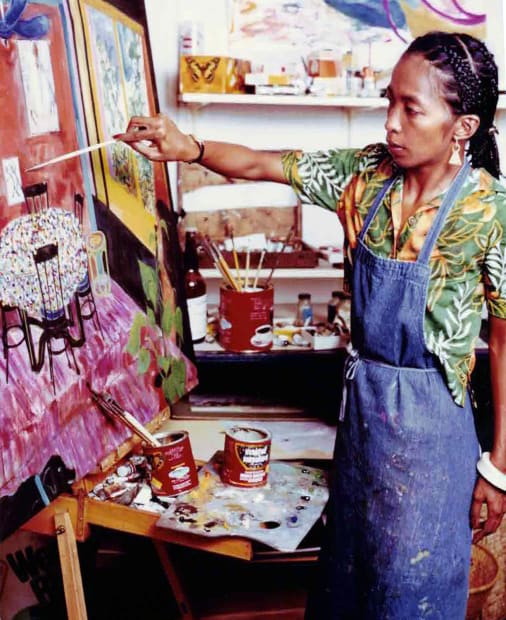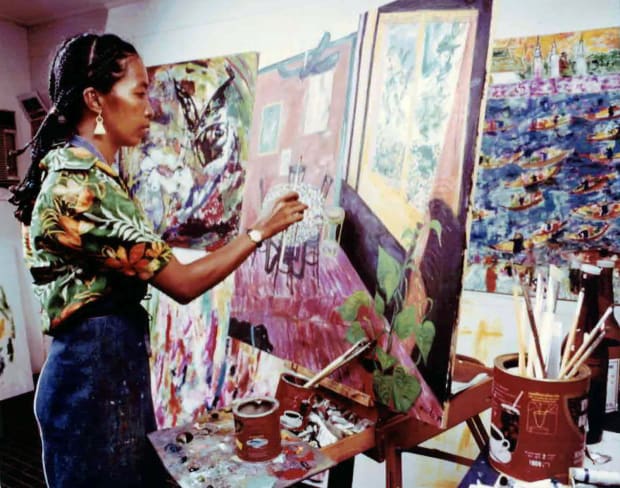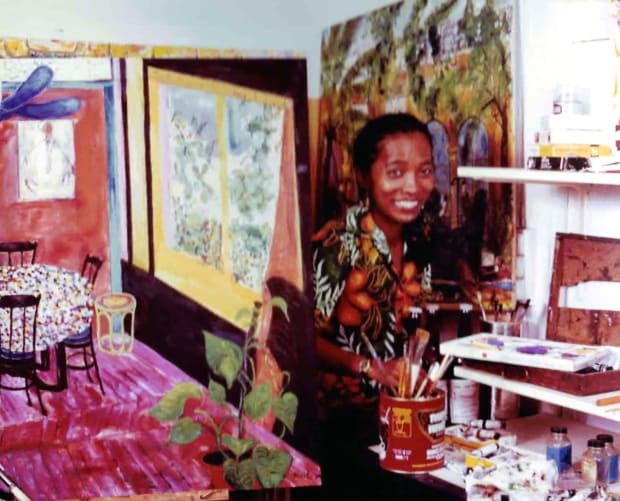Pacita Abad's constant travels forced her to set up her studio quickly in order to start painting as soon as possible, and her studio space was always the center of household activity. Pacita's studios and homes were always one entity, as her artwork completely dominated her living environment, with her studio seamlessly flowing into every corner of her living space. Paintings that she was working on in her studio would quickly appear on her dining room or living room walls, so that she could see them in a different light and perspective. The next day they would be back in her studio for more work.
Pacita filled her home not only with paintings, but with brightly painted walls, colorful rugs, handwoven textiles, tribal sculpture and an abundance of flowers, and all of these worked their way into her paintings. People would enter Pacita's studio-homes and be blown away with sensory overload, as their eyes didn't know where to focus.
-
-

Batanes
2002-2004 -

Singapore
2000-2004 -

Jakarta, Pakubuwono
1998 to 2000 -

Jakarta, Sumbing
1994 to 1997 -

Washington, 16th Street
1986 to 1993 -

Manila, Roberts Road
1984 to 1986 -

Manila, Lovina Street
1982 to 1984 -

Boston, Charles Street Loft
1979 to 1982 -

Bangkok, Soy Suan Phlu
1978 to 1979 -

Dhaka, Dhanmondi
1977 to 1978 -

New York, 23rd Street Chelsea
1977 to 1978 -

Washington, 15th Street
1975 to 1977
-
-
-
-
-
-
-
-
-
-
-
-
-






